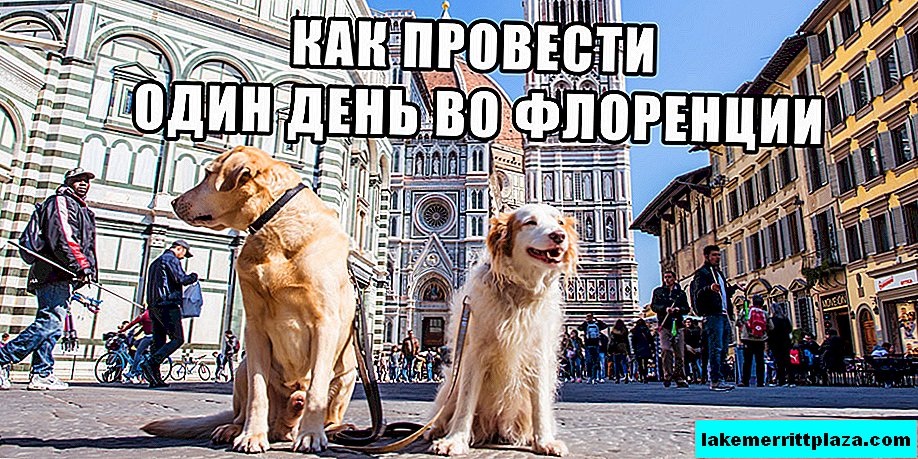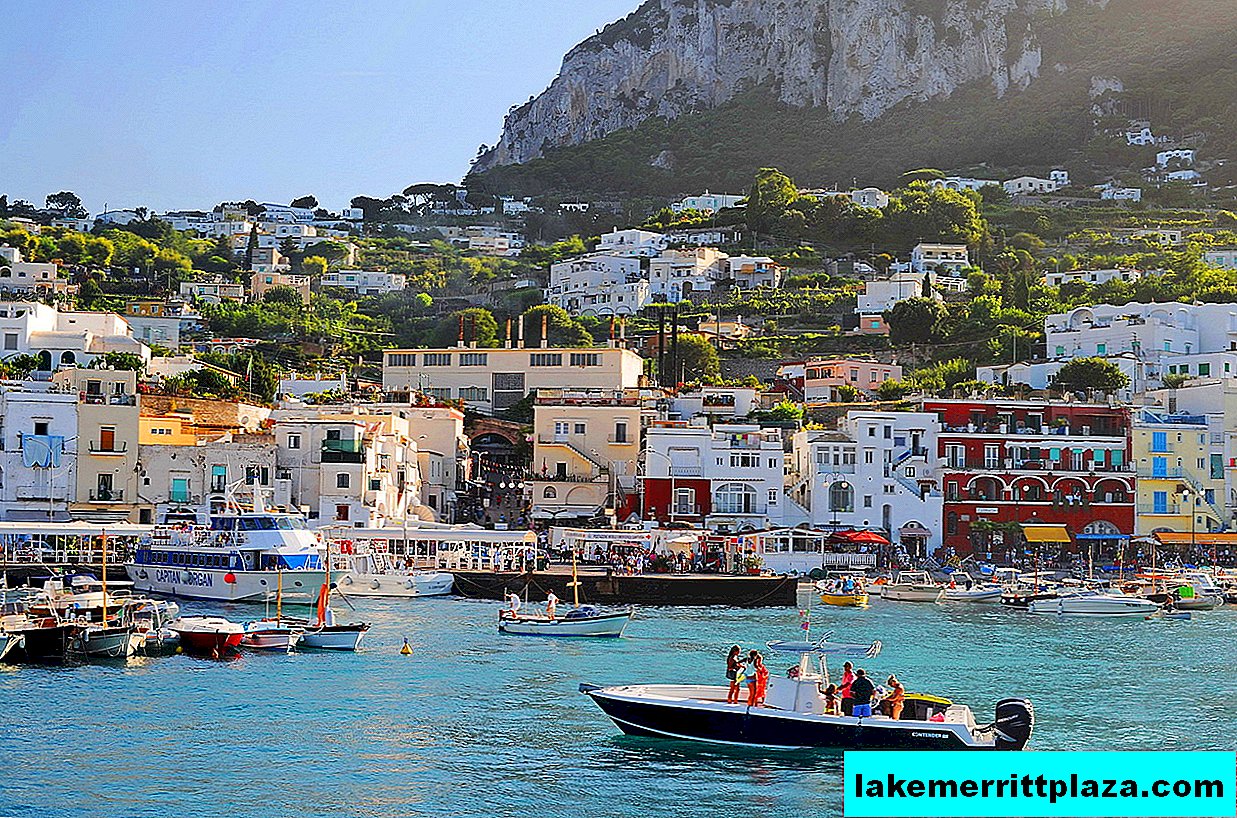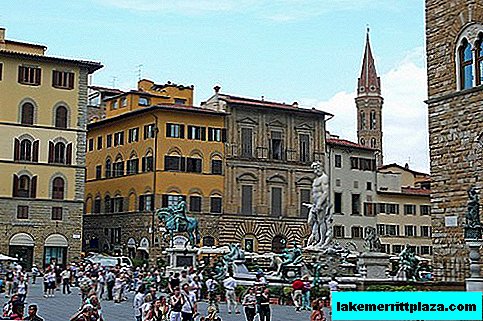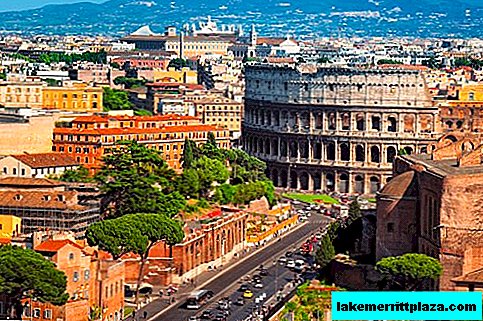The Forum of Trajan (Foro di Traiano) is a magnificent building and historical monument located in the central part of Rome near the Piazza Venezia. The construction of this architectural monument began in 106, shortly after the victory of Emperor Trajan over Dacia (the forum was built just in honor of this event), ended on January 1, 112. The Forum of Trajan is considered the last imperial forum created in Rome.
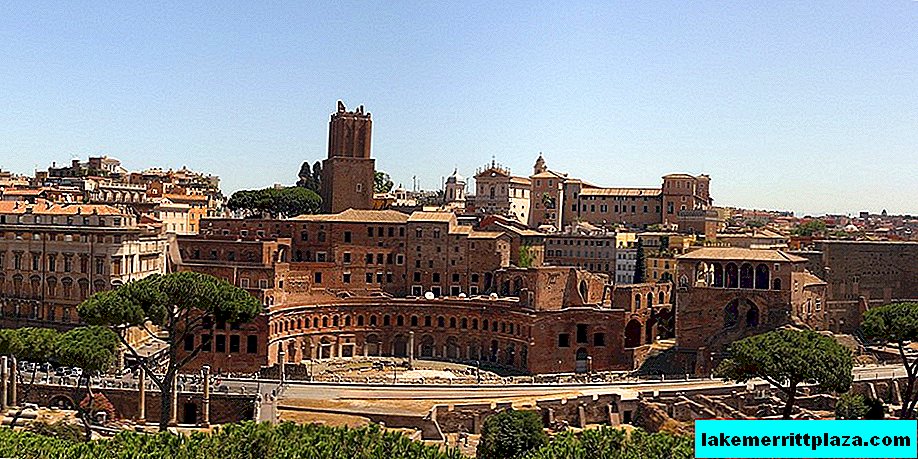
History of creation
After the impressive victory of the Roman emperor Trajan over the Dacian kingdom in 106 AD (the emperor fought with the Dacians since 101), the lord of the “eternal city” decided to perpetuate the memory of his campaign. It is possible that Trayan was haunted by the glory of the great Alexander of Macedon, perhaps the economic component of this victory played a role (the accession of Dacia to the Empire gave Rome additional financial income) - but the emperor laid not just a stele or monument, but erected the largest imperial forum that existed at that time.
Appolodor of Damascus, who was the emperor’s favorite and was next to Trajan during the campaign to Dacia (in 105-106, he was the architect of the bridge more than a kilometer in length, erected for this campaign - the bridge bears the name of Trajan and is located on the shore Danube). Also in 106, Appolodor restored the odeon (the building in which concerts, theatrical productions and competitions, made in the form of an amphitheater) of the last Roman emperor of the Flavian dynasty - Domitian.
To implement the project, the architect needed to tear down part of the slopes of the Quirinale and Capitoline hills - not a single forum that had been built before required changes in the natural landscapes of such proportions.
However, the workers led by Appolodor did an excellent job - at the time of completion of the forum, the forum was 300 meters long and 185 meters wide, and in the middle of the forum stood the Column of Trajan (her dedication to the emperor took place in 113), which was 38 meters in height. The forum complex included the basilica Ulpia (basilica Vlpia), the Imperial library of Trajan (bibliotheca Vlpia) and the market of Trajan (mercatvs Traiani). After death, the complex was replenished with the Temple of the Divine Trajan (Templvm Divi Traiani).
The exterior of the complex
Art historians say that the Romans had not yet seen a more beautiful complex, either before or after Trajan. Even the scale of the complex itself is amazing - it takes up as much space as all the imperial forums created before Trajan (the forums of Augustus, Nerva and Caesar).
The forum itself was a colonnade with seating, enclosed by a wall and protected by a roof. The entrance to the forum was crowned by a magnificent triumphal arch, decorated with a statue depicting a chariot drawn by six horses. In the northern part of the colonnade is the famous Ulpia Basilica, decorated with white marble.
Column of Trajan

The majestic column of Trajan, 38 meters high, glorifies the full power of the Roman Empire and the exploits of its commanders.
The column is decorated with marble slabs that reflect the events of that time with historical accuracy. (albeit with some exaggeration, which is inherent in the memorable Roman buildings) and in chronological order. Basically, the plates tell the story of the Dacian campaign, the passage through the Danube, the battles and the triumphant return of Trajan with the victorious army to Rome. For historians, these plates are the most valuable material that makes it possible to judge the events of that era, the clothes and opinions of the Romans.

The bas-reliefs on the facing slabs depict the slender rows of mighty Romans in battle armor. In the lower part, the columned depict Dacian warriors, powerless before the onslaught of the Roman army. In total, over 2500 human figures are depicted on the bas-reliefs of the column of Trajan. Emperor Trajan himself is depicted on them more than 59 times. The decoration of the column demonstrates the superiority of the Roman Empire to opponents. The top of the monument was originally decorated with a gilded statue of an eagle, personifying the greatness of Rome. Subsequently, it was replaced by a statue of Emperor Trajan, but at the end of the 16th century, on the orders of Pope Sixtus V, a statue of St. Peter took her place.
Looking at the grandeur of the column and its scale, it does not even occur to her that it is hollow inside! Rather, inside it is a spiral staircase (186 steps), which leads to the observation deck at the top of the column. Unfortunately, a viewing platform is not available for tourists to visit.
By far not all the sights that make up the Forum of Trajan have reached our days. The column is best preserved - it is undoubtedly magnificent, but it is designed to look most amazing in the environment of the Forum buildings, and in solitude it looks somewhat lonely.
It is also noteworthy that under the column is the grave of Emperor Trajan himself and his wife. The Senate and Emperor Hadrian decided to make an exception to the ban on burial in cities to emphasize the merits of Emperor Trajan to Rome and his people.
Trajan's Market
The first prototype of a modern shopping center was created on the territory of the Forum by order of Trayan - In order for the merits of the Empire to be in full view of the large public and guests of the city, it was ordered to create more than 150 retail stores with goods on the territory of the forum. Moreover, they should have been turned towards the center of the square. This appearance of the retail space was called the "showcase". Isn't it strikingly similar to modern shopping centers?
Via Traian market was Via Biberatica, which housed taverns and taverns. It is likely that the name of the street itself comes from the Latin bibere, which means “drink”.
In addition to retail space, Trayan's Market included special establishments in which free distribution of food products to the poor took place.
Of interest is the architectural design of the market - thanks to the use of the basis for walls made of a mixture of stone and concrete, the market height has increased to 5 floors.

Now in the market of Trajan is a museum of the Imperial Forums. A ticket to the museum costs 14 euros and includes visits to exhibitions and other Roman museums.
Detailed information on opening hours and prices can be found on the official website www.mercatiditraiano.it
How to get there
To carefully examine the forum of Trajan and feel the atmosphere of ancient Rome without crowds of tourists, we recommend visiting the Forum during the author's tour of Rome at dawn. It is located near Venice Square and the Palazzo Valentini. If you face the Altar of the Fatherland, then on your left a hundred meters will be the Trajan's Column.


